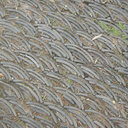[Argument on the correct Chinese name of genus Kadsura Kaempf.ex Juss].
Ключови думи
Резюме
Family Schisandraceae is composed of two genera Schisandra and Kadsura, which are quite different in regard to the used part and medical function. Traditionally, the fruits of Schisandra plants were called 'Wuweizi' used as tonic for neurasthenia, antitussive, and sedative agents. The stems and roots of Kadsura plants, with names related to 'XueTeng', possess activating blood circulation and eliminating stasis and are used for the treatment of rheumatism, fractures and irregular menstruation. The dried fruit of Schisandra chinensis was recorded in Chinese Pharmacopoeia (2010 Edition) as 'Wuweizi', while the dried fruit of S. sphenanthera was recorded as an official origin of 'Nanwuweizi'. Historically, there was no evidence that the fruits of Kadsura plants were substituted as 'Wuweizi' either in ancient literatures or contemporary marketing. However, genus Kadsura is still popularly called 'Nanwuweizi' and plant K. longipedunculata is regarded as the origin of 'Nanwuweizi', thus this will cause confusion as well as misunderstanding of genus Kadsura. The authors recommended, therefore, the Chinese name of genus Kadsura should be 'Lengfantengshu' and K. longipedunculata with the name of 'Lengfanteng' in order to guarantee the drug authenticity.


